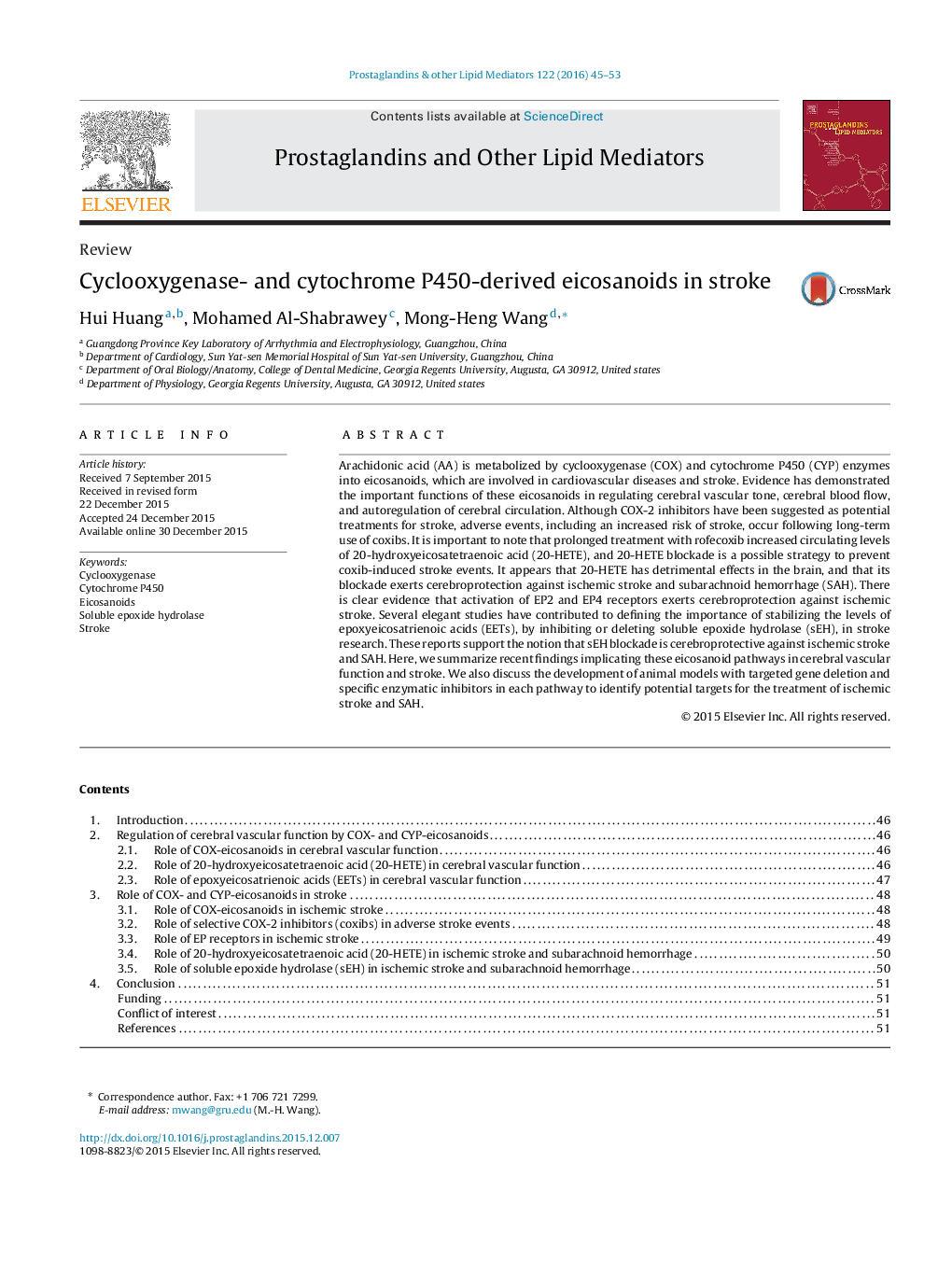| Article ID | Journal | Published Year | Pages | File Type |
|---|---|---|---|---|
| 2019502 | Prostaglandins & Other Lipid Mediators | 2016 | 9 Pages |
Abstract
Arachidonic acid (AA) is metabolized by cyclooxygenase (COX) and cytochrome P450 (CYP) enzymes into eicosanoids, which are involved in cardiovascular diseases and stroke. Evidence has demonstrated the important functions of these eicosanoids in regulating cerebral vascular tone, cerebral blood flow, and autoregulation of cerebral circulation. Although COX-2 inhibitors have been suggested as potential treatments for stroke, adverse events, including an increased risk of stroke, occur following long-term use of coxibs. It is important to note that prolonged treatment with rofecoxib increased circulating levels of 20-hydroxyeicosatetraenoic acid (20-HETE), and 20-HETE blockade is a possible strategy to prevent coxib-induced stroke events. It appears that 20-HETE has detrimental effects in the brain, and that its blockade exerts cerebroprotection against ischemic stroke and subarachnoid hemorrhage (SAH). There is clear evidence that activation of EP2 and EP4 receptors exerts cerebroprotection against ischemic stroke. Several elegant studies have contributed to defining the importance of stabilizing the levels of epoxyeicosatrienoic acids (EETs), by inhibiting or deleting soluble epoxide hydrolase (sEH), in stroke research. These reports support the notion that sEH blockade is cerebroprotective against ischemic stroke and SAH. Here, we summarize recent findings implicating these eicosanoid pathways in cerebral vascular function and stroke. We also discuss the development of animal models with targeted gene deletion and specific enzymatic inhibitors in each pathway to identify potential targets for the treatment of ischemic stroke and SAH.
Related Topics
Life Sciences
Biochemistry, Genetics and Molecular Biology
Biochemistry
Authors
Hui Huang, Mohamed Al-Shabrawey, Mong-Heng Wang,
